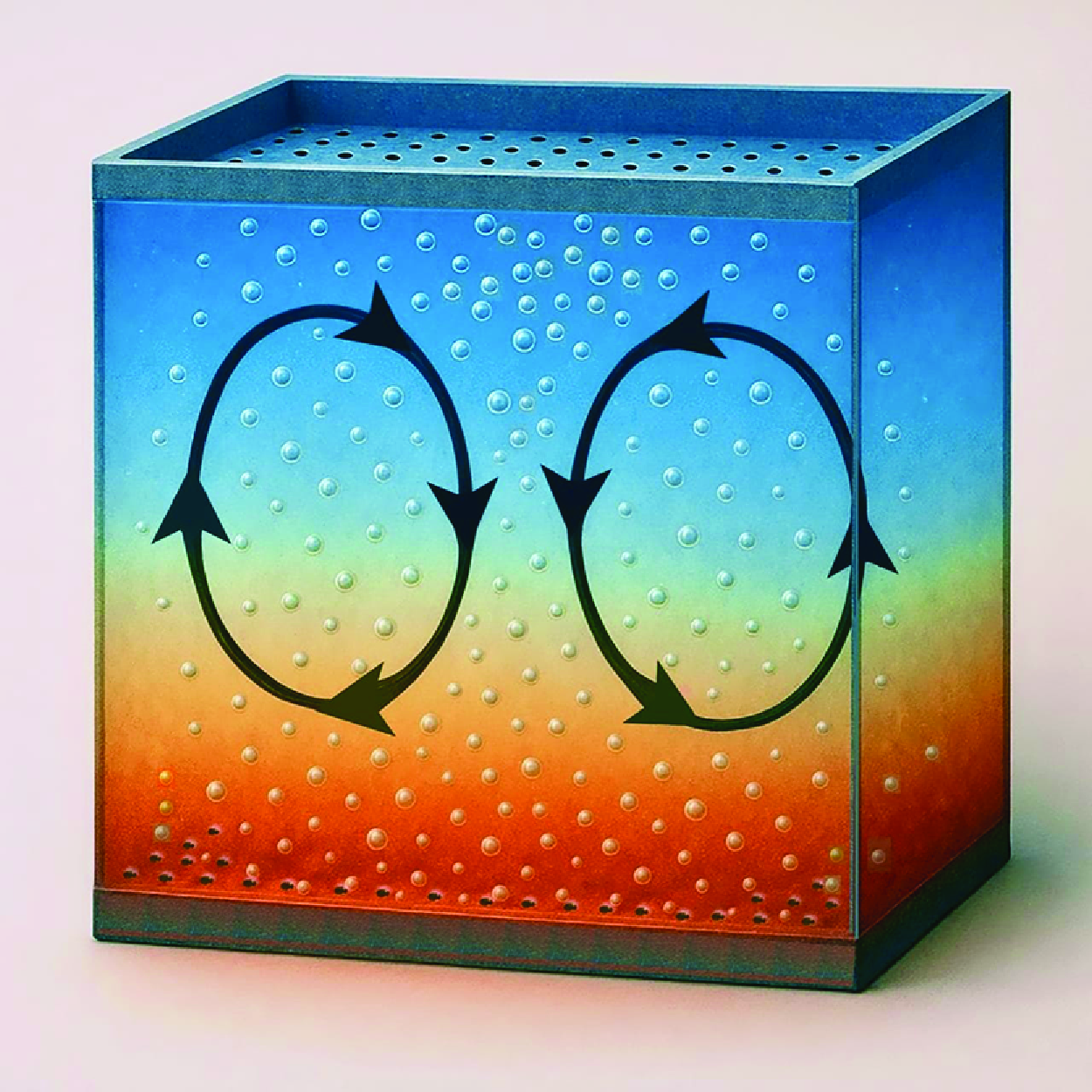Article contents
Impact of particle injection velocity on the stability of the particulate Rayleigh–Bénard system
Published online by Cambridge University Press: 21 July 2025
Abstract

The linear stability of a thermally stratified fluid layer between horizontal walls, where non-Brownian thermal particles are injected continuously at one boundary and extracted at the other – a system known as particulate Rayleigh–Bénard (pRB) – is studied. For a fixed volumetric particle flux and minimal thermal coupling, reducing the injection velocity stabilises the system when heavy particles are introduced from above, but destabilises it when light particles are injected from below. For very light particles (bubbles), low injection velocities can shift the onset of convection to negative Rayleigh numbers, i.e. heating from above. Particles accumulate non-uniformly near the extraction wall and in regions of strong vertical flow, aligning with either wall-impinging or wall-detaching zones depending on whether injection is at sub- or super-terminal velocity. The increase of the volumetric particle flux always enhances these effects.
JFM classification
Information
- Type
- JFM Rapids
- Information
- Copyright
- © The Author(s), 2025. Published by Cambridge University Press
References
- 3
- Cited by


